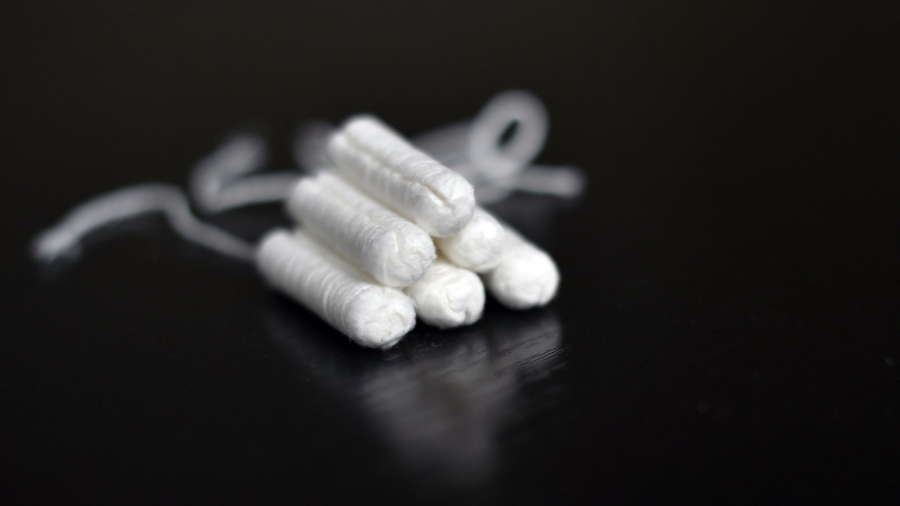The Food and Drug Administration (FDA) announced on Sept. 10 that it will conduct an assessment on the toxic metals—such as lead and arsenic—found in tampons and any potential risks it poses to women.
In a study published in July, researchers tested 30 different tampons from 14 brands purchased from major online retailers and stores in the United States, Greece, and the United Kingdom to determine their metal levels.
The blind study ran tests for arsenic, barium, calcium, cadmium, cobalt, chromium, copper, iron, manganese, mercury, nickel, lead, selenium, strontium, vanadium, and zinc and found “measurable concentrations” in all 16 metals.
Although the study found evidence of metals in tampons, the tests did not show whether the metals are released into the body when used, the FDA said in a statement on Tuesday.
“It also did not test for metals being released, absorbed into the vaginal lining, and getting into the bloodstream during tampon use,” the FDA statement read.
The FDA said it will launch an independent literature review and start an internal bench laboratory study to evaluate metals in tampons to better understand the possible health risks from the presence of chemicals in them.
The FDA lab study plans to mimic the normal use of tampons and measure whether or how much metals are released into the body when used. Following the investigation’s results, the agency will perform a risk assessment and reveal any possible health risks based on a worst-case scenario of metal exposure, said the FDA.
“We want the public to know that before tampons can be legally sold in the U.S., they must meet FDA requirements for safety and effectiveness. Manufacturers must test the product and its component materials before, during, and after manufacturing.” the statement read.
The study also caught the attention of the Democratic Women’s Caucus (DWC), which sent a letter to the FDA on Sept. 4 urging the agency to investigate the safety concerns. The following day, congresswoman Ayanna Pressley (D-Mass.), DWC Policy Co-Chair, said in a press release that women could be putting their lives at risk for using a basic hygiene product.
“In light of this alarming report, we’re calling on the FDA to take urgent action to ensure the safety of these products, protect the health of those who depend on them, and give women the peace of mind that they can use them without putting themselves at risk,” said Pressley.
Study Finds Heavy Metals in Tampons
Tampons are used by 52 to 86 percent of Americans who menstruate and women may use more than 7,400 tampons in their reproductive years. The study conducted by researchers from the University of California Berkeley, Columbia University, and Michigan State University found toxic metals in tampons such as lead which does not have a “safe” exposure level.
It noted that metal concentrations varied by the regions where the tampons were bought, including organic versus non-organic material and store versus name-brand tampons.
According to the study, it showed that multiple toxic metals such as lead, cadmium, and arsenic received an “elevated mean concentration” with more lead found in non-organic tampons and more arsenic found in organic tampons.
Multiple side effects from exposure to heavy metals could increase the possibility of damage to the brain, kidney, and liver, as well as the cardiovascular, reproductive, and developmental effects.
Researchers said they found high concentrations of zinc and calcium in tampons used for odor control, lubrication, and antimicrobial agents, which explains the high numbers.
Although researchers discovered metals in tampons, they said more studies and research are needed to replicate their findings to confirm whether metals can leach out from tampons and be absorbed into the vaginal lining.
The lead author of the study, Jenni A. Shearston, a postdoctoral scholar at the UC Berkeley School of Public Health and UC Berkeley’s Department of Environmental Science, Policy, and Management, said in a statement, “I really hope that manufacturers are required to test their products for metals, especially for toxic metals. It would be exciting to see the public call for this, or to ask for better labeling on tampons and other menstrual products.”

